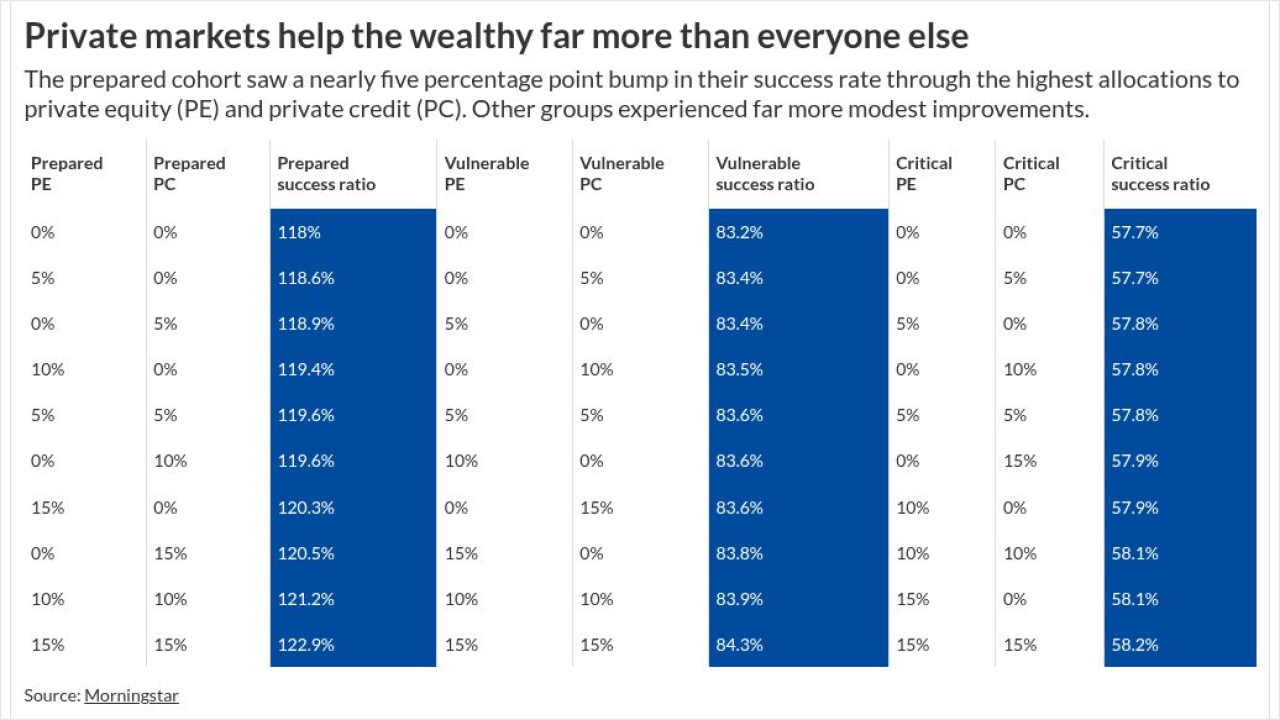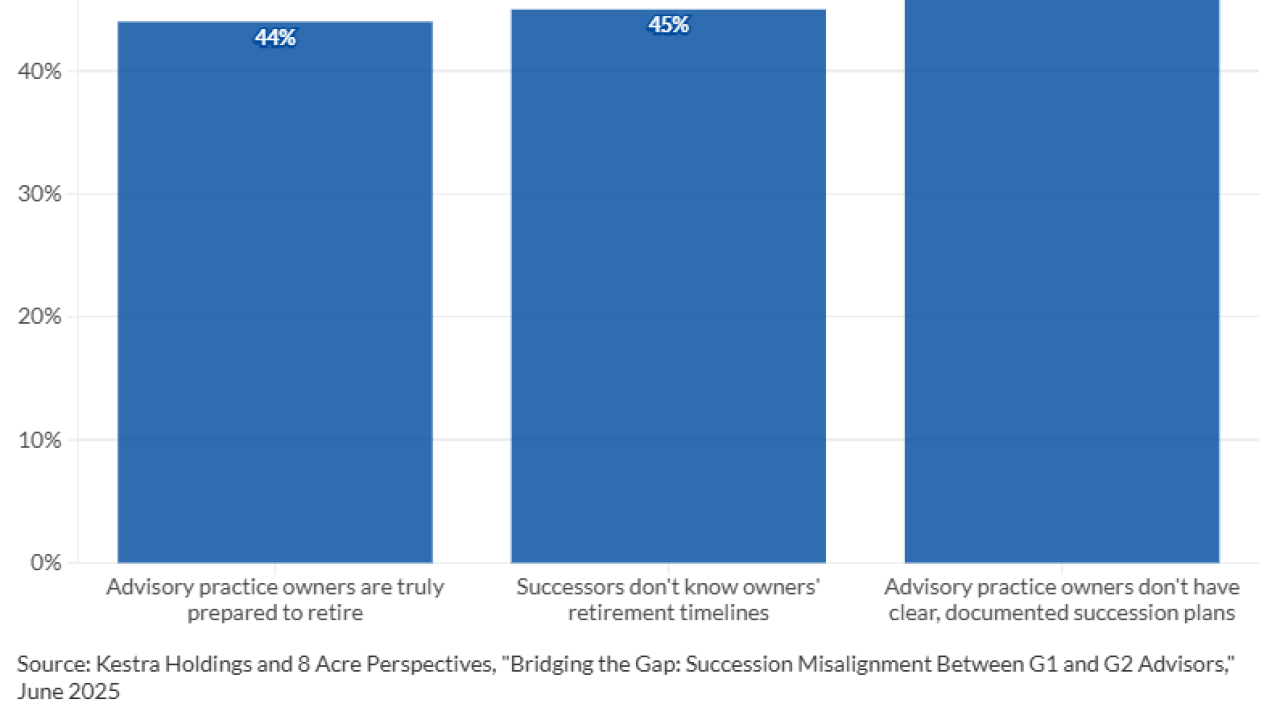The impact of last weeks tax accord in Congress -- officially known as the American Tax Relief Act of 2012 -- is likely to be far wider and more complex than many have imagined. And many of these complexities will directly impact financial advisors.
What makes this deal such a game changer? A lot of it comes down to the estate tax. Few, if any, clients believed wed ever have a permanent $5 million exemption. But not only is that exemption now permanent, it is also inflation-adjusted and portable -- that is, a widow or widower may be able to use the estate tax exemption of the spouse who dies first.
The fear that drove waves of clients to engage in estate planning in the closing months of 2012 may never appear again. Outside the ultra high-net-worth sector, most clients will not fear the estate tax. Most will no longer care (although there may be some lower concern for state estate taxes). Estate planning has changed forever.
The estate changes also have implications to the income tax planning that planners are regularly involved in. Well illustrate a few of the many changes, but keep in mind this is barely an appetizer. (If you want more information, I'll be giving webinars on this on
HIGHER TAX RATES
The backdrop for these changes is a change in the effective tax rates for the highest earners. The act makes permanent the tax cuts enacted as part of the 2001 tax act, so that for most Americans, the prior tax rates remain in effect. But higher-income clients, the mainstay of many planners practices, face a tougher income tax regime.
- A new 39.6% top marginal tax bracket has been added for those earning over $400,000 for single taxpayers, $425,000 for head of household taxpayers, and $450,000 for married taxpayers.
- These same high earners will also face a new higher 20% tax rate on dividends and capital gains.
- These rates are further aggravated by the 3.8% Medicare tax on investment income, which also applies starting in 2013 on adjusted gross income over $200,000 for singles and $250,000 for married couples.
- Itemized deductions and personal exemptions are phased out on income of $250,000 single and $300,000 for married couples filing jointly.
When all these factors are combined with state income taxes, affluent clients could face a combined tax rate of more than 50%.
The immediate challenges will be ascertaining the real and often unexpected impact of the new laws on planning -- and educating clients to deal with these new realities. What might you to do alleviate this painful new income tax burden? And how might your actions interact with the clients estate planning? There are a host of options, each with its own unique twists.
HARVESTING GAINS AND LOSSES
For many high-income clients, an estate planning move has complicated the traditional tax strategy of harvesting gains and losses. Obviously, planners prefer to have all assets in house, so that asset allocation and gain/loss harvesting can be controlled and best executed. And yet some clients have always insisted on maintaining some investment assets under a different roof. That obviously necessitates some coordination with whoever is managing these other assets in order to be certain that the asset allocations and harvested gains and losses match up as intended.
In 2012, like no other year in the history of the estate tax, wealthy clients formed and made gifts to sophisticated irrevocable trusts. Many of these trusts are located in states with laws especially favorable to trust administration. (Alaska, Delaware, Nevada and South Dakota were the top picks.) And many, perhaps most, of these 2012 gift trusts were structured as grantor trusts -- in which the client who set them up remains taxable on the trusts earnings, even if the earnings remain in the trust and are not (or even cannot) be distributed. So before planners can harvest gains and losses theyll have to determine who is taxable on the trust income (i.e., whether it is a grantor trust or not), and who is managing the investments of each of these trusts to coordinate overall asset allocations and gain/loss harvesting.
But the process may be even more complicated. Many of the 2012 gift trusts were also formed as directed trusts. This means a designated person -- often called an investment trustee or investment advisor -- has the authority to make investment decisions, rather than the general trustee. So harvesting gains and losses, or modifying asset allocation or location decisions, may require the coordination of several different trustees, trust investment advisors and ultimate investment managers. Planners should start asking clients now who else theyll need to coordinate with come December.
CHARITABLE PLANNING
Charitable contributions might be used to offset some gain, but the phase-outs for itemized deductions might negate some charitable planning.
Charitable remainder trusts, through which the client can gift appreciated assets to be sold and defer capital gains tax, are another option. These CRT trusts are not subject to the new Medicare tax on passive income, another advantage.
LIFE INSURANCE
Life insurance products have long offered a tax-favored envelope to protect investment dollars. But the new tax increases substantially enhance the benefit of investment build-up inside the protective skin of an insurance policy.
There are several new twists to life insurance planning in light of the new estate tax laws.
Clients with wealth under the estate tax threshold -- potentially $10.24 million for a couple for 2012, and inflation indexed in future years -- might skip the complexity and cost of a life insurance trust and merely own their policies directly. Its far from optimal from the perspective of protecting the assets. But the estate tax rationale for insurance trusts will not apply to most clients, in light of the high inflation-adjusted exemption and the availability of spousal portability.
A planning technique that has been used over the years, but which most estate planners frowned upon, was purchasing life insurance inside a retirement plan -- so that pre-tax dollars could be used to fund premiums. Estate planners were generally worried about the inclusion of the insurance proceeds in the insureds estate. That now changes for clients under the large exemption amounts.
ASSIGNING TITLE
It had been common for planners to work with clients estate planners to divide assets into separate accounts and names, so that both spouses would have sufficient assets to fund a bypass trust. This almost ubiquitous planning step has changed in many significant ways.
- Many wealthy clients gave most or all of their $5.12 million exemption to trusts in 2012. If only one spouse made such gifts, rather than dividing assets roughly 50/50, the spouse who did not use up his or her exemption might consider holding all assets in his or her name to fund the bypass trust. (More on that in a minute.) If both spouses used up their exemptions in 2012, it really wont matter much.
- For the vast majority of clients, unless state estate tax planning requires asset division, title to assets may be irrelevant from a tax planning perspective. They simply wont be subject to an estate tax under the new rules.
- With the growing threat of identity theft, regardless of the lack of estate-tax consequences, it might still be beneficial to divide some assets, assigning them to several names and tax identification numbers. This would minimize exposure if one tax identification number is stolen.
BYPASS TRUSTS
These trusts are designed to protect a surviving spouse, by providing access to trust assets but keeping those assets outside the surviving spouses estate. They were the mainstay of many client plans, but the new normal of estate planning changes this.
For one thing, most clients will simply be far enough beneath the inflation-adjusted exemption amount that they will want to avoid the complexity of bypass trusts -- which involves titling assets, dealing with a trustee, filing trust income tax returns and so forth. Moreover, clients who gifted most or all of their exemption amounts in 2012 may have little need for a bypass trust. Setting up a trust for modest assets may simply not be cost-effective.
Estate planners will, quite appropriately, endeavor to convince clients that trusts are needed to address state estate tax, divorce/remarriage risk and more. And most wills and revocable living trusts mandate the funding of these trusts. But many clients will simply no longer tolerate the complexity.
For many of your high-net-worth clients, its going to be essential to revise existing estate planning documents. The new tax deal changes the paradigm of estate planning. Planners will face new challenges in coordinating with their clients estate planners, to assure that planning is done properly and in a manner that best meets client goals.
Martin M. Shenkman,CPA, PFS, J.D., is a Financial Planning contributing writer and estate planner in Paramus, N.J. He runs laweasy.com, a free legal website.





